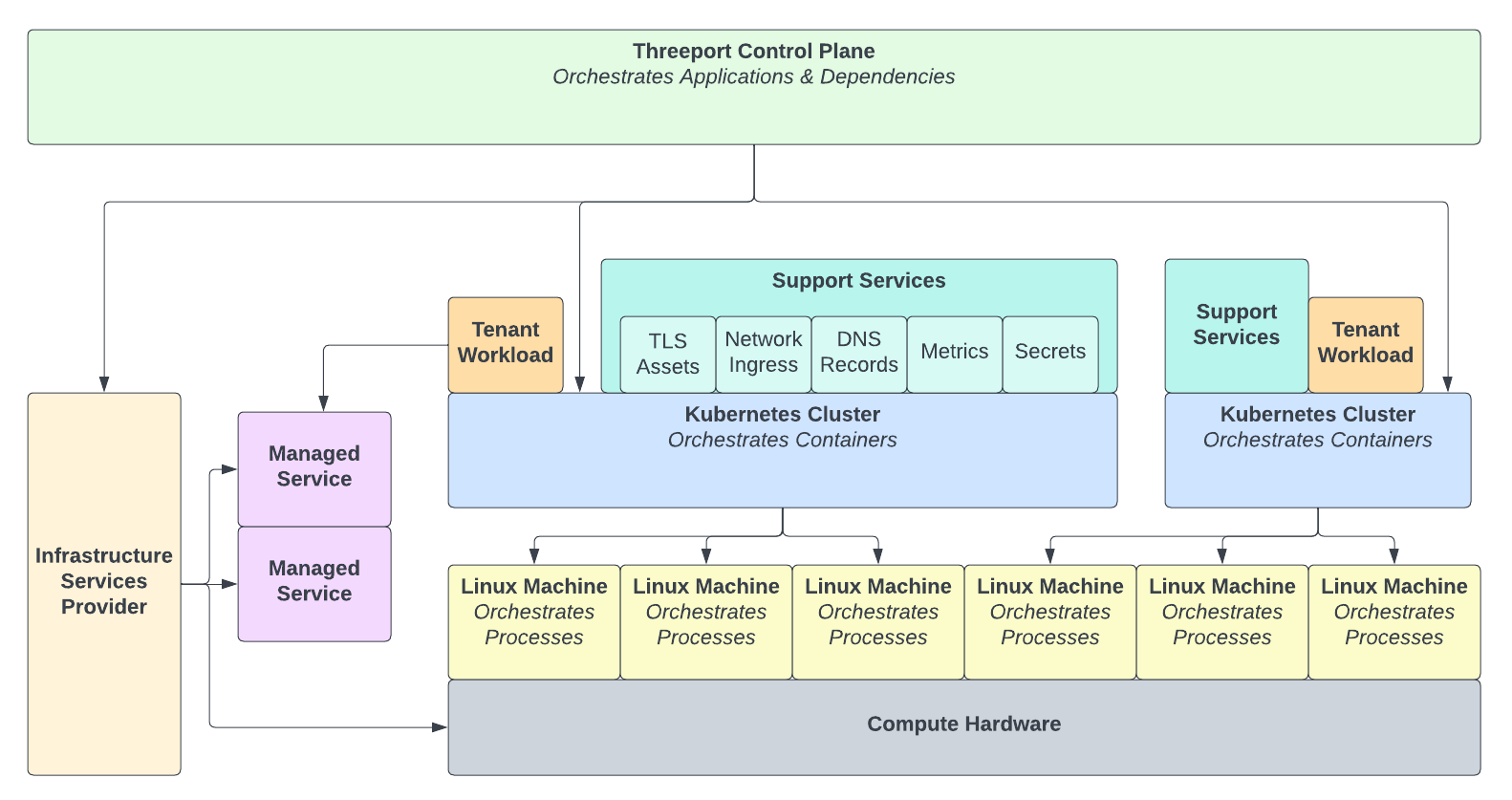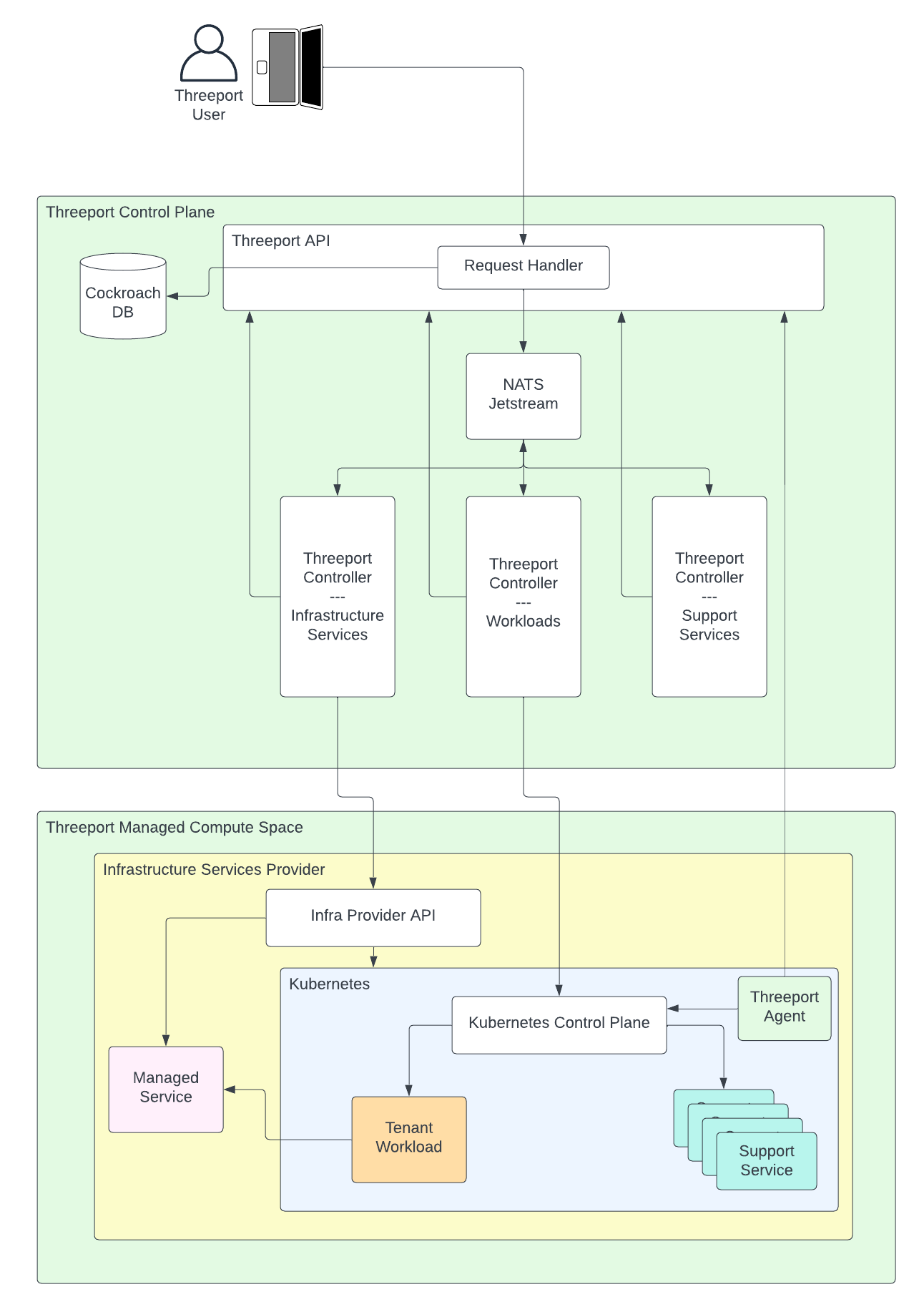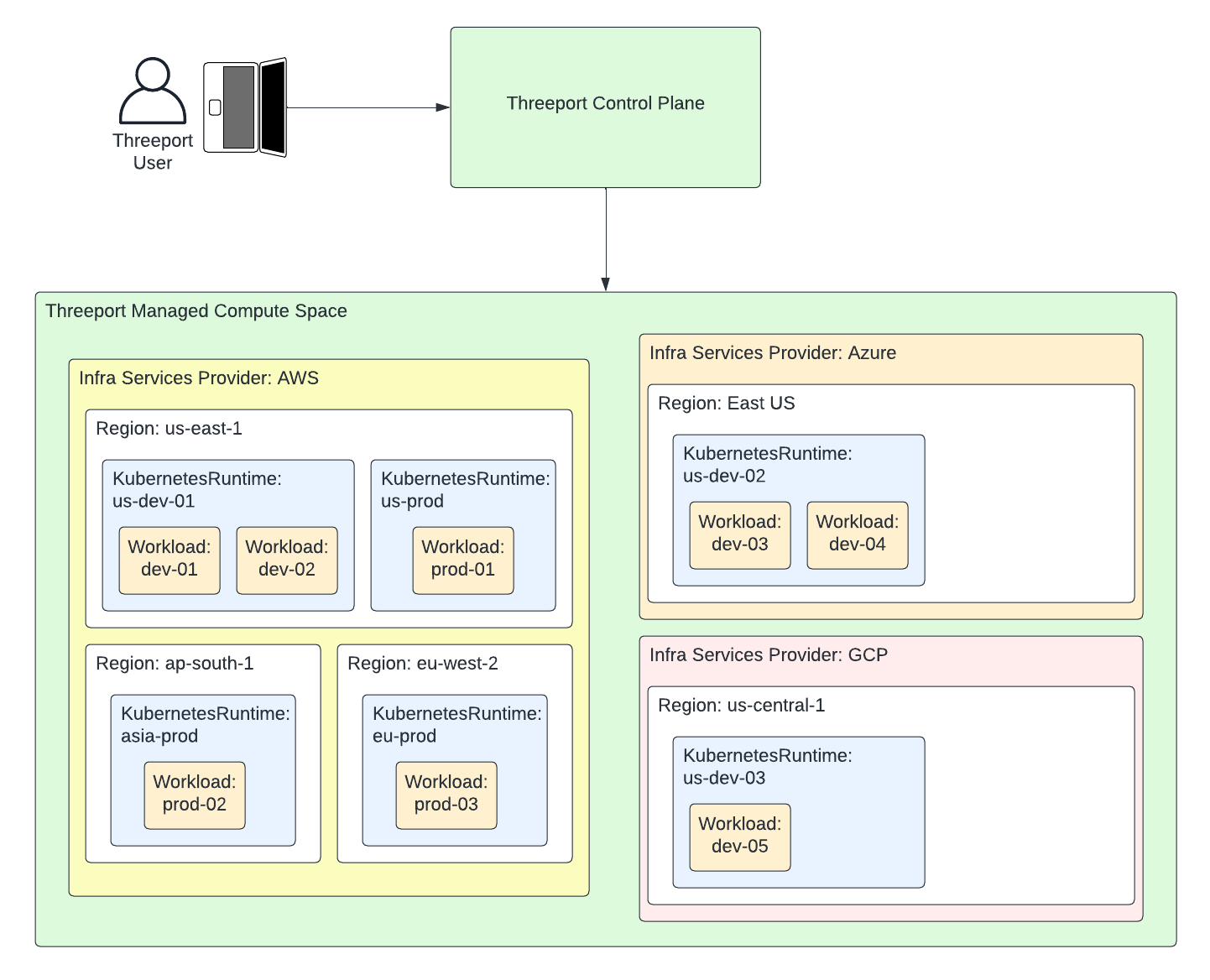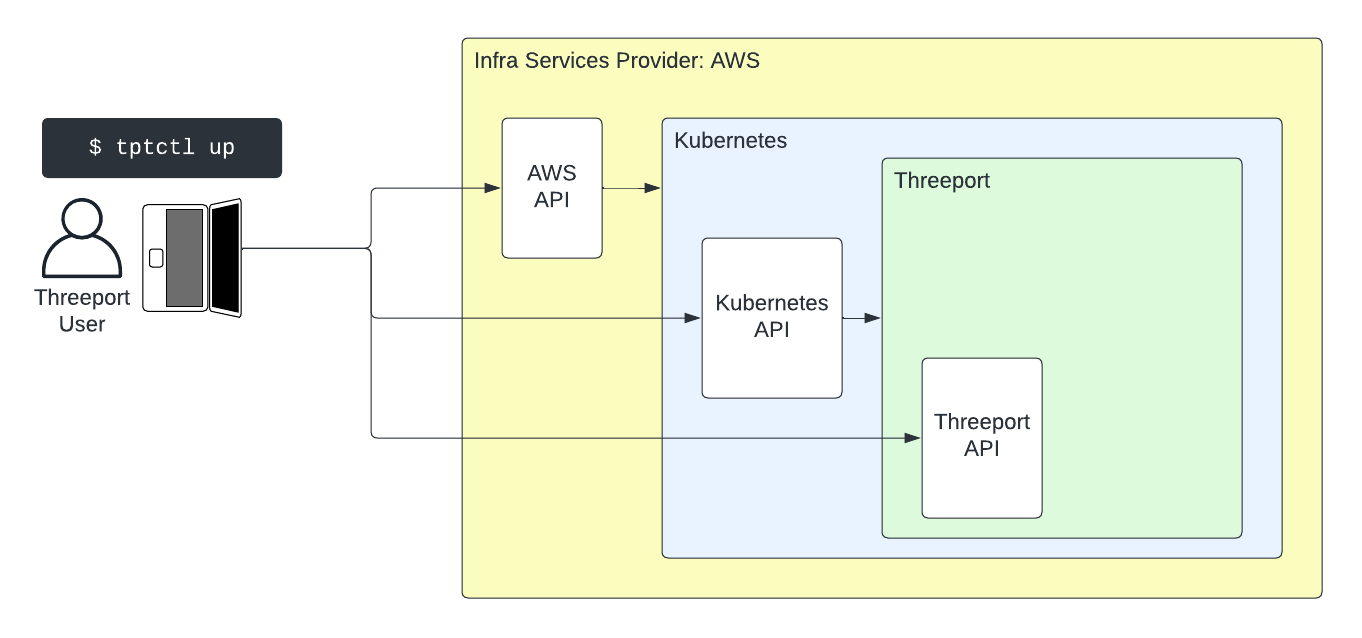Architecture Overview¶
Threeport is a distributed software system that serves as a software delivery platform. It serves as a unified, global control plane for all cloud infrastructure, compute environments and the applications that run there.
Users interface with the Threeport RESTful API in the control plane. In response to user requests, Threeport interfaces with infrastructure, managed service provider and Kubernetes APIs on the user's behalf. It orchestrates the delivery of software with all of its dependencies. Those dependencies encompass everything from the cloud infrastructure up to the services needed for the application to run successfully.

Foundational Principles¶
Threeport is designed and built upon the following principles:
- General purpose programming languages like Go are superior to DSLs and templates for defining the behavior of complex systems.
- Git repos are not great for storing the configuration of complex systems. For a system that is driven by software controllers, a database is more efficient for both reads and writes by those controllers.
- Use progressive disclosure in the abstractions available to users. Dead simple use cases should be trivial to configure and execute. However, complex use cases should be supported by allowing users greater level of configurability in the underlying systems when needed.
Control Plane¶
The diagram below illustrates the Threeport control plane in a little more detail. The control plane consists primarily of:
- A RESTful API
- A relational database: CockroachDB
- A controller notification broker: NATS Jetstream
- A number of controllers that each manage a specific domain of concerns and reconcile state for specific objects in the system, such as Workloads, KubernetesRuntimes and support services such as Gateways and DomainNames.
- An agent that runs in the Kubernetes environments to report back on the status of workloads running there.
Note: the controllers in the diagram below are just abstract examples. For a complete list of the actual controllers in the Threeport control plane, see the Control Plane architecture docs.

This diagram illustrates the following process:
- The Threeport user sends a request to the Threeport API. This is usually
done with the Threeport CLI,
tptctlbut can be made by anything that can make a call to a RESTful API. This request might be for a new Kubernetes environment or for an application deployment into that environment. - A request handler in the Threeport API persists the desired state from the user in the Threeport database which is CockroachDB. Once the desired state is persisted, the request handler sends a notification to the appropriate controller/s through NATS Jetstream.
- If the request requires some compute infrastructure and/or managed services, the controller responsible for infrastructure services connects to the cloud provider API to manage that.
- If the requests requires the deployment of a tenant workload, the controller responsible for workloads connects to the Kubernetes API to instruct its control plane to deploy the containerized workloads.
- If the workload dependencies require a support service to be installed on Kubernetes, the controller responsible for support services will create new Workload objects in the Threeport API which, in turn, prompts the controller for workloads to connect to Kubernetes to install and configure the support services for that workload.
If a controller cannot complete its work immediately because of some long-running process or missing dependency that is being satisfied elsewhere, it will request a re-queue of the notification after a specified delay so that it can retry. This process repeats until the desired state is reconciled. At this point, the controller acknowledges the notification as complete.
Each controller writes back any relevant updates to the Threeport API.
The Threeport Agent which runs in the compute space environment watches the resources deployed by Threeport and reports back statuses to the Threeport API.
The end result is the tenant workload running in the Kubernetes runtime environment with all of its dependencies satisfied.
Note: The Threeport controllers never directly interact with each other. Whenever a controller needs work completed by another controller, it makes calls to the Threeport API to persist that change in the DB. The Threeport API then notifies the appropriate controller that its respective state needs to be reconciled.
See the Control Plane document for more detailed information about the control plane.
Compute Space¶
The compute space is simply the compute environments where the user's applications run. Threeport is a natively multi-cluster orchestrator so the compute space includes all the Kubernetes clusters hosting workloads. Any number of environments in any region on any supported cloud provider can be managed be a part of the compute space and managed with a single Threeport control plane.
Note: Today, AWS is the only supported cloud provider and Kubernetes is the only supported runtime. However, we plan to add additional providers and runtimes in the future.

Bootstrapping Threeport¶
Threeport itself runs on Kubernetes. As such, Threeport needs a bootstrapping mechanism to create the environment for the Threeport control plane.
The Threeport CLI, tptctl provides that bootstrapping.
See the tptctl install guide for a guide on
installing the tptctl command line tool.
See the Remote Threeport guide for a
walk through on installing Threeport in AWS using tptctl.

The tptctl up command executes the following steps when installing on AWS:
- The user's local AWS config and credentials are referenced to call the AWS API and install Kubernetes using the EKS service.
- Once the Kubernetes cluster is available, the Kubernetes API is called to install the Threeport control plane components.
- Once the Threeport control plane is up, the Threeport API is called to register the provisioned Kubernetes environment with the system so that it may be used as a part of the compute space for tenant workloads if desired.
- Finally, the user's local Threeport config is updated with connection details
and credentials so the user can securely connect to the Threeport API with
tptctlto manage their applications.
A Threeport control plane can also be installed locally on a user's workstation using kind for local testing and development. See our Local Threeport guide for instructions on installing Threeport locally. With a local Threeport control plane, the user can then deploy Kubernetes clusters in the cloud and deploy workloads there. However, this is only recommended for testing and development. Don't use local Threeport control planes to run important production workloads.
Next Steps¶
See our Control Plane document for more architectural detail on the Threeport control plane and the Threeport Controllers document for information about how Threeport controllers work.